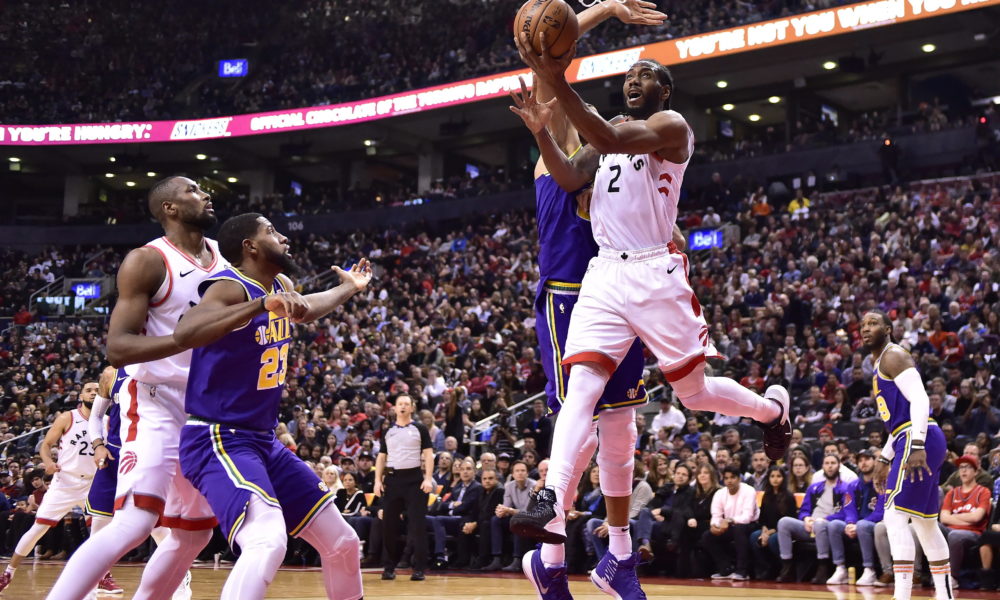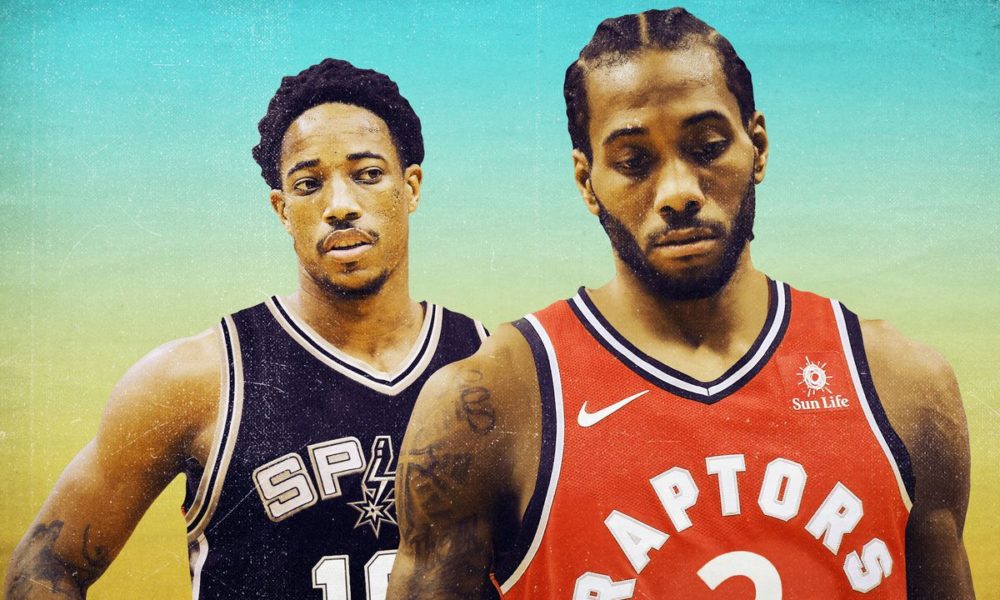Norman Powell has quietly had a hell of a season. He has become an offensive weapon off the bench. Former weaknesses have turned into strengths, and that formerly albatrossian contract is looking significantly less debilitating. This isn’t the first time that Powell has made steps forward. In the past, injuries have generally derailed positive momentum Powell has made. It’s heartening that Powell recently returned from a shoulder injury to play even better than he had been before. Let’s dig into the meat of Powell’s play, keeping an eye on whether his effective play is sustainable.
The most important part of Powell’s game is his finishing. Despite not attacking the rim significantly more often, he has almost magically turned into a high-level finisher overnight. The numbers scream small-sample size blip. After never shooting higher than 57 percent (and 40th percentile for his position) around the rim, Powell is up to 68 percent at the rim (83rd percentile). That’s basically improving from Jose Calderon to Jimmy Butler around the rim; improvement like that shouldn’t happen overnight.
Numbers can fail to capture the full story. If you dig into the actual film, Powell has made legitimate improvements to his technique around the rim.
He’s gathering the ball with strength and attacking stationary defenders’ weaknesses rather than attacking without purpose.
He’s jumping straight into contact rather than contorting his release to avoid it.
He recognizes when the defence is beat and is willing to not jump at all, instead getting the ball to the glass as quickly as possible to limit any chance at recovery from his defender.
The common theme is awareness. Powell is frequently jumping from closer to the hoop than he used to. In past years, he had a tendency to jump early and be on the downward portion of his leap when he attempted to finish. This allowed shot-blockers a much easier chance to erase his attempts, as well as asking for more strength and balance to make the shots. Now Powell is saving his jump until it’s necessary, giving him more strength in the air.
His weak-hand finishing is drastically better, and he’s driving with his head up more often. He may not be one of the league’s best finishers yet (as his numbers would indicate), but he is better. He is driving smarter. He’s always had the athleticism to finish, but he’s only just now learning how to attack NBA defences and finish over and around much bigger men.
Powell prefers to create his own drives to the rim, as only 37 percent of his makes around the rim have been assisted this year. Because he is frequently driving out of the pick-and-roll, or out of the corner after pump-fakes, Powell’s improved finishing has become a weapon on the Raptors’ bench units.
Partially because of his virtuosic finishing, Powell is shooting more efficiently than he ever has. His effective field goal percentage is 8 points higher than his previous best, now sitting at 59.9 percent (96th percentile for his position), and his points-per-100-shot-attempts stand at 120.8 (92nd percentile), per Cleaning the Glass.
Powell’s three-point shooting has inched forward into respectability. He’s at 33.3 percent on the year after shooting 28.5 percent last year; he’s hitting enough to keep defences honest. Even better, Powell is 9-of-21 (42.9 percent) when defences leave him open by 6 feet or more, which is great but probably doesn’t mean much. It’s mostly just encouraging that we can’t attribute Powell’s efficient scoring to his shooting. He isn’t shooting an unsustainable number, which would indicate his good play simply being a hot streak.
Because Powell has been scoring so well, his passing has become a sorely needed area of creation for bench units. It’s important to note that he hasn’t improved dramatically as a passer. He’s averaging about one assist per game – about par with his career numbers – but he’s doing it on the lowest usage rate of his career (14.6 percent).
Most of Powell’s assists have come within the flow of the offence. He’s picked up simple assists dumping the ball into OG Aunonby or Greg Monroe in the post, or passing the ball to shooters coming around screens. Those aren’t steps forward. Where Powell has displayed improvement, however, in his ability to play within himself. He has passed up his own shot for better ones for teammates.
He has also displayed some nice backdoor chemistry with Delon Wright. They both have herky-jerky driving styles, so it only makes sense that Wright knows how to cut backdoor for Powell on the latter’s unique forays into the paint.
Powell’s passing shows that the game has slowed down for him. More than in past years, Powell is playing with his head up, aware of his surroundings. He varies his pace rather than only playing at full speed. He is comfortable in his situation, not forcing bad shots as a bid for extra playing time.
There have been some negatives. Powell’s turnover rate remains high, as he can still occasionally make wild drives into traffic without a plan. Even though Powell has trended in the right direction – with only two turnovers in his last four games – it’s still an area that requires attention. He still doesn’t draw enough fouls for all his drives. Importantly, those issues have not been debilitating, as they have in past years.
So has Powell become a useful player in the long-term? If you watch the film, his increased awareness and calm indicate meaningful improvement. The numbers tell a more muddled story. He has really only improved in the single area of finishing at the rim, while almost all of his other numbers have remained consistent. If his at-rim finishing is simply a hot streak, then the entire conception of his improvement topples inward. He would just be yet another player who needs the ball in his hands but can’t create efficient shots for himself or others.
Yet Powell has not only been a positive, but he’s been needed since his return from injury. The bench has required his creation, and he’s remained efficient despite playing the majority of his minutes alongside Toronto’s D-team. The film shows discrete improvements that numbers fail to capture. The outline is there of a useful player who will stick in the league long-term.
Powell has been miscast for some time. He just isn’t a 3-D wing. On offence, he doesn’t move well enough without the ball – or shoot well enough – to fit that mold. He prefers to catch the ball, pull it out a few feet behind the arc, and attack a stationary defence. That has destroyed the team’s offence in past years, especially when he played alongside a starting lineup last year that didn’t need another shot creator. His current role playing within an offence-starved bench unit is perfect, especially now that he seems to have excised poor decisions from his game.
Even more important is the effect on Powell himself. We often forget that players are people, and the notoriously hard-working Powell takes his struggles seriously. It’s fantastic for the Raptors that Powell has remade himself into a useful player, but it’s even better to see Powell successful and happy. We’ve seen Powell’s resurgences before, but this time, his steps forward may well be lasting ones.



